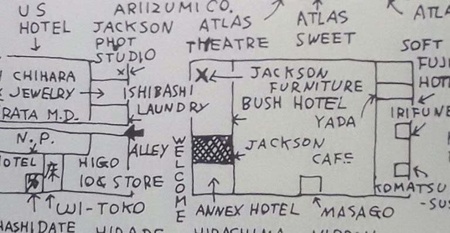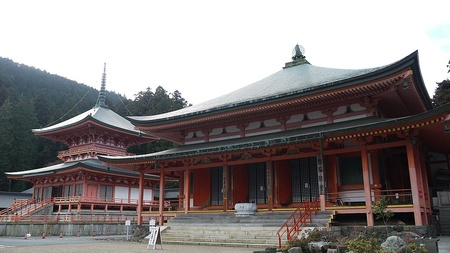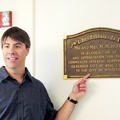My life is not finished yet. I turned eighty last year. I have been out of Japan for more than 50 years, mostly in Seattle.
I am a so-called Shin Issei or New First-Generation Japanese. Issei is a Japanese person who came from Japan to the US before the war and I came after the war. The war in this case means the Pacific War or World War II. I truly respect all Issei people here in Seattle — past and present — for their courage, the dreams they have carried, their strong family ties and their goals to achieve success through dedication to work.
When I arrived in Seattle in 1969, it was a blue-collar town with Boeing and Weyerhaeuser. Sea-Tac Airport Immigration was a small barracks hut, with very few people arriving from overseas. Parking was an open-air space in front of the airport building. Mr. Tomi Terao, who was working on the 747 in Everett came to pick me up and took me to the Boeing plant there. He said it was the biggest single building in the world. We had lunch at Jackson Café in Japan Town.

I came back to Seattle with a working visa in 1970 and settled in at Cambridge Apartments at 903 Union. The owners, Jean and Toshi Nishimura, took care of me, inviting me for dinner at their top floor residence nightly. They were such kind people. The views of the Cloud Room, atop the Camlin Hotel, and of the Roosevelt Hotel were shining with neon signs above the clouds. So many Japanese Issei and Nisei people helped me: Toru Sakahara, Min Tsubota, James Matsuoka, Takemitsu Kubota, Tom Tsutagawa, and Art Harano. Later when I opened a Japanese restaurant in Bellevue, there were Kaz Ishimitsu, Tom Kubota and many more. Without their support and friendship, I would not be here today. My friendship with Tomio Moriguchi has lasted for many years. He is a “mentor” for my American life.
In 1995, my wife and I drove to Hardin, Montana, the Crow Indian Reservation and Tee Pee Tent Capital of the world to interview Jim Shirasago, a Nisei rancher and farmer. His parents came from Hiroshima. Jim worked at the Pike Place Market when he was a young but returned to Hardin, where Montana’s “Big Sky” had captured his heart. Taking his mother to White Sulphur Hot Springs in Montana was his biggest recreation. He was around 80 years old then. I asked him the secret of his long life.
He said, “Enjoy your life when you can.”
Seven years ago, I organized a tour to Montana to visit the roots of Issei in Whitefish, Great Falls, and Helena, escorting 16 Japanese Americans as a part of the Nikkei Horizons Education Program. Herb Tsuchiya, whose grandfather worked for the Great Northern railroad in Whitefish, was deeply moved visiting the Whitefish Station Museum where hundreds of Japanese Issei made their permanent life.
I also took another group of Nikkeijin on a Japan Gourmet Tour, the same year in the fall of 2015, to visit Tokyo and Kyoto. We had a wonderful time visiting the Enryakuji Temple (Mount Hieizan) eating Shojin Ryori (Buddhist temple vegetarian cuisine). Many travelers still compliment me, saying that it was the best trip of their lives. I was happy to show them the country where I was born.

Whether I like it or not, my remaining life has entered its final chapter.
Jinsei itaru
Tokoro seizan ari
Sumeba miyako
You can die any place you choose. It doesn’t have to be the place where you were born. Go discover the world with kokorozashi (will) and live well within the community. It will become your capital.
I am grateful for my health. I can work every day in a restaurant that I opened when I turned 78 surrounded by young people of the next generation. Everything we did in the past was a rehearsal for our main stage show of the future.
My passion for life comes from the curiosity to find what kind of scenery is waiting for me when I turn the next corner. Good Food is Good Life. Great Food is Great Life.
* This article was originally published in The North American Post on March 18, 2022.
© 2022 Sam Takahashi




